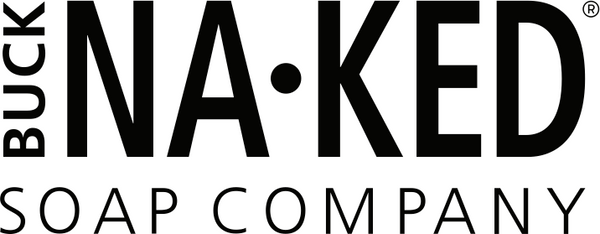Why Natural Continued
Our skin is our body’s largest organ. We don't often think about it, but it’s our first line of defense against potentially harmful bacteria and contaminants. The thin layer of sebum that covers our bodies works like an invisible shield. At 22 incredible square feet, our skin deserves to be nurtured and nourished with the best quality of ingredients.
However, our skin is also porous, which means that between 13% (the bottom of our feet) and 100% (underarms and groin) of the products we put onto our skin is absorbed within 26 seconds. Although federally-approved, many traditional products contain a variety of chemicals that soak into our skin and bloodstream in that 26-second window and potentially disrupt our bodies' natural balances.
Some chemicals, like sodium laureth sulfate (a detergent and lather booster), can contain contaminates that are considered possible human carcinogens – harmful to the nervous system, and classified as possible developmental toxicants. This is why Buck Naked Soap Company makes only natural skin care products.
Defining "Natural" - The Dirty Dozen
1. BHA and BHT
Used mainly in moisturizers and make-up as preservatives, BHA and BHT are suspected endocrine disruptors and BHA may cause cancer.
2. Coal tar dyes
P-phenylenediamine and colours listed as "CI" followed by a five digit number or listed, for example, as "FD&C Blue No. 1" or "Blue 1" in the U.S. CI 75000 and CU 77000 series are considered natural and inorganic, respectively. However, they have potential to cause cancer and may be contaminated with heavy metals that are toxic to the brain.
3. DEA-related ingredients
Used in creamy and foaming products, such as moisturizers and shampoos, they can react to form nitrosamines that may cause cancer, and are also harmful to fish and other wildlife. Also look for related chemicals MEA and TEA.
4. Dibutyl phthalate
Used as a plasticizer in some nail care products, this is a suspected endocrine disruptor and reproductive toxicant. It is harmful to fish and other wildlife.
5. Formaldehyde-releasing preservatives
Look for DMDM hydantoin, diazolidinyl urea, imidazolidinyl urea, methenamine and quarternium-15, which are used in a variety of cosmetics. They slowly release small amounts of formaldehyde, which causes cancer.
6. Parabens
Used in many different cosmetics as preservatives, they are suspected endocrine disrupters and may interfere with male reproductive functions.
7. Parfum (a.k.a. fragrance)
Any mixture of fragrance ingredients used in a variety of cosmetics, even in some products marketed as ‘unscented’. Some fragrance ingredients can trigger allergies and asthma, have links to cancer and neurotoxicity, and/or be harmful to fish and other wildlife.
8. PEG compounds
Used in many cosmetic cream bases, these can be contaminated with 1,4-dioxane, which may cause cancer. Also look for related chemical propylene glycol and other ingredients with the letters ‘eth’ (e.g. polyethylene glycol).
9. Petrolatum
Used in some hair products for shine and as a moisture barrier in some lip balms, lipsticks and moisturizers. This is a petroleum product that can be contaminated with polycyclic aromatic hydrocarbons, which may cause cancer.
10. Siloxanes
Look for ingredients ending in ‘-siloxane’ or ‘-methicone’. Used in a variety of cosmetics to soften, smooth and moisten, they are a suspected endocrine disruptor and reproductive toxicant (cyclotetrasiloxane) and are harmful to fish and other wildlife.
11. Sodium laureth sulfate
Used in foaming cosmetics, such as shampoos, cleansers and bubble bath, it can be contaminated with 1,4-dioxane which may cause cancer. Also look for related chemical, sodium lauryl sulfate, and other ingredients with the letters ‘eth’ in the name.
12. Triclosan
Used in antibacterial cosmetics, such as toothpastes, cleansers and antiperspirants, it is a suspected endocrine disrupter and may contribute to antibiotic resistance in bacteria. It is also harmful to fish and other wildlife.
Love your skin.
